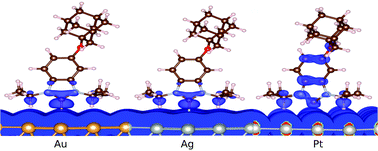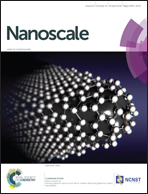Carbene-mediated self-assembly of diamondoids on metal surfaces
Abstract
N-heterocyclic carbenes (NHC)s are emerging as an alternative class of molecules to thiol-based self-assembled monolayers (SAMs), making carbene-based SAMs much more stable under harsh environmental conditions. In this work, we have functionalized tiny diamondoids using NHCs in order to prepare highly stable carbene-mediated diamondoid SAMs on metal substrates. Using quantum-mechanical simulations and two different configurations for the carbene-functionalized diamondoids attached on gold, silver, and platinum surfaces we were able to study in detail these materials. Specifically, we focus on the binding characteristics, stability, and adsorption of the NHC-mediated diamondoid SAMs on the metal surfaces. A preferential binding to platinum surfaces was found, while a modulation of the work function in all cases was clear. The surface morphology of all NHC-based diamondoid SAMs was revealed through simulated STM images, which show characteristic features for each surface.



 Please wait while we load your content...
Please wait while we load your content...